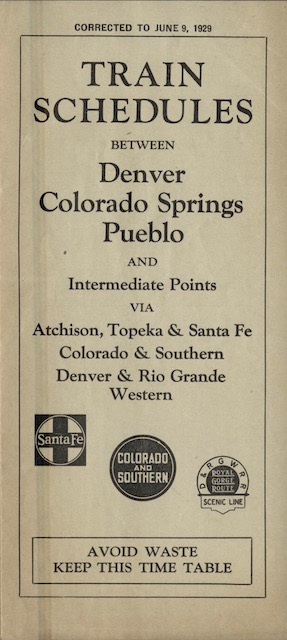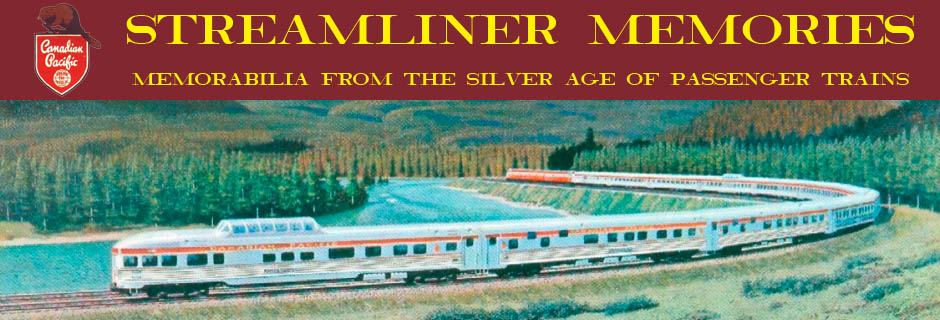As of 1887, three different railroads — the Denver & Rio Grande; Denver, Texas & Gulf (later Colorado & Southern); and Santa Fe — had lines from Denver to Pueblo. They competed until 1918, when the federal government temporarily took over U.S. railroads and rationalized the Denver-Pueblo corridor by tearing out the Colorado & Southern route and redesigning the other two so that one would handle northbound trains and the other would do southbound trains. This became known as the Joint Line and was used by all three railroads after the war.
 Click image to download a 1.2-MB PDF of this timetable from the Tim Zukas collection.
Click image to download a 1.2-MB PDF of this timetable from the Tim Zukas collection.
This timetable shows ten trains a day operating each way between Denver and Pueblo. Half of them were Rio Grande and the other half are listed as joint C&S-Santa Fe trains (though some are listed C&S first and others AT&SF first). Many of the trains stopped only twice along the way and made the 119.5-mile trip in 3-1/2 hours for an average speed of 34 mph. The only named train, Rio Grande’s Panoramic, which continued from Pueblo to Salt Lake City, also made just two stops but for some reason took 4 hours. A local train made as many as 16 stops, including flagstops, but still managed to make the trip in 3 hours 55 minutes southbound and 4 hours 10 minutes northbound.
The timetable notes whether trains consisted of coaches, sleepers, diners, and/or parlor cars. All trains had coaches, all southbound trains and all but one northbound train had sleepers. Only two trains, one of them being the train without sleepers, had a parlor car. Most Rio Grande trains had diners as did some of the trains listed C&S first, but none of the trains listed AT&SF first had diners.
Operation of the Joint Line must have been confusing to many passengers. Before 1918, the Rio Grande and Santa Fe each had their own stations, so when the Joint Line was created, north and southbound trains stopped at different stations in most cities. Only Denver, Pueblo, and one other town had union stations. The Rio Grande and Santa Fe routes had crossed each other three times and the feds took out the crossings so that the north and southbound routes were each partly over Rio Grande and partly over Santa Fe tracks.
As a result, a southbound local train would first stop at three Rio Grande stations, then three Santa Fe stations, then four Rio Grande stations, then three Santa Fe stations, a union station, another Santa Fe station, a Rio Grande station, and finally Pueblo Union Station. Northbound trains would usually stop at the opposite stations.
The Rock Island Railroad’s line from the East to Colorado Springs went to the Rio Grande station. The Midland Terminal, which went west from Colorado Springs to Cripple Creek, used the Santa Fe station. So, potentially, some passengers would have to change stations at Colorado Springs to make their connections from one railroad to another.
